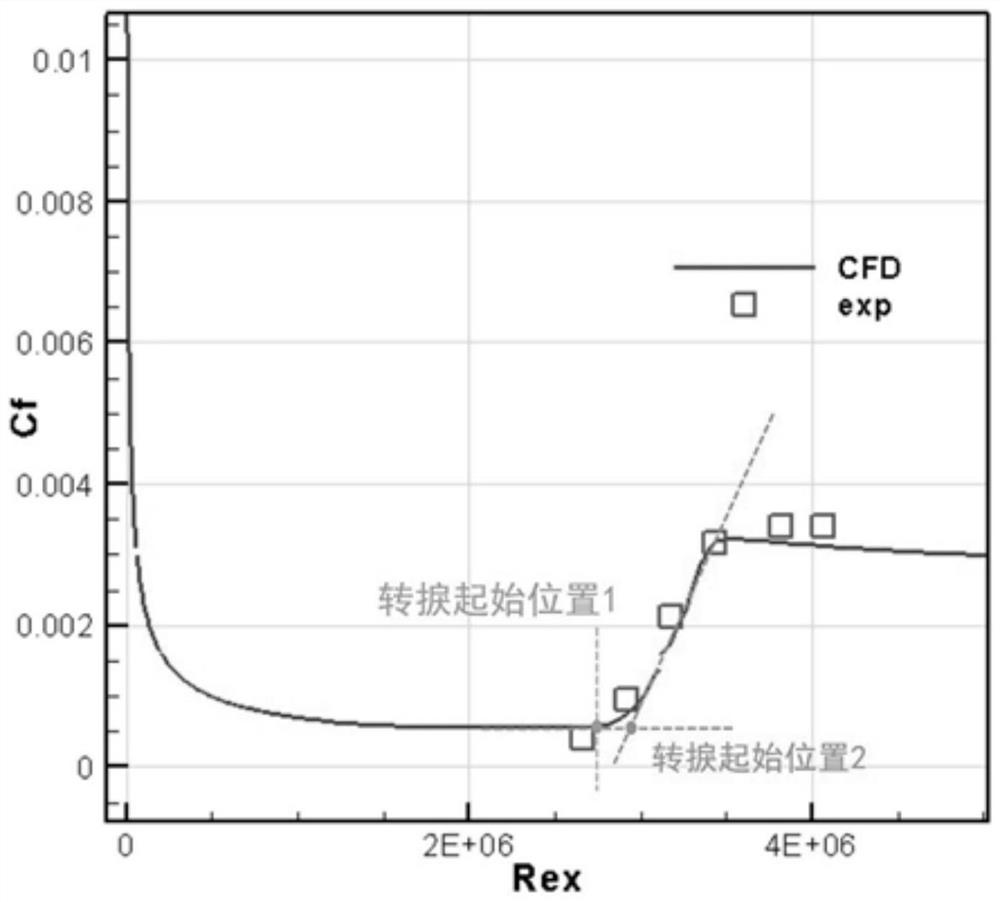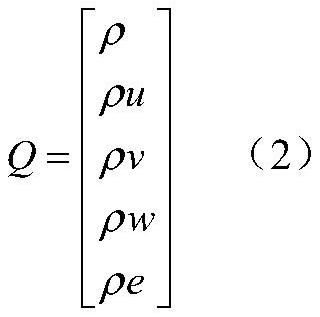A hypersonic cross-flow transition prediction method considering the effect of surface roughness
A surface roughness, hypersonic technology, applied in the testing, measuring devices, instruments, etc. of machine/structural components, can solve the difficulty of realization and promotion, the prediction technology of transverse flow transition cannot be localized, and it is impossible to predict the transverse flow transition, etc. question
- Summary
- Abstract
- Description
- Claims
- Application Information
AI Technical Summary
Problems solved by technology
Method used
Image
Examples
Embodiment 1
[0056] The invention discloses a hypersonic cross-flow transition prediction method considering the effect of surface roughness. The hypersonic cross-flow transition prediction method at least includes the following steps:
[0057] S1: Let the critical cross-flow Reynolds number and surface roughness satisfy the logarithmic relationship, specifically:
[0058]
[0059] Through step S1, the construction method of the transition criterion based on the hypersonic cross-flow experimental data is given.
[0060] S2: Based on the existing hypersonic wind tunnel experimental data, the Reynolds number of the transition critical momentum thickness under hypersonic conditions with different roughness is obtained through the CFD laminar flow solution, and the least square method is used to solve the relationship coefficient, and the criterion relationship is obtained:
[0061]
[0062] where Re SCF is the steady cross-flow Reynolds number, h is the surface roughness, θt is the mom...
PUM
 Login to View More
Login to View More Abstract
Description
Claims
Application Information
 Login to View More
Login to View More - R&D
- Intellectual Property
- Life Sciences
- Materials
- Tech Scout
- Unparalleled Data Quality
- Higher Quality Content
- 60% Fewer Hallucinations
Browse by: Latest US Patents, China's latest patents, Technical Efficacy Thesaurus, Application Domain, Technology Topic, Popular Technical Reports.
© 2025 PatSnap. All rights reserved.Legal|Privacy policy|Modern Slavery Act Transparency Statement|Sitemap|About US| Contact US: help@patsnap.com



